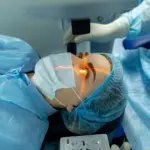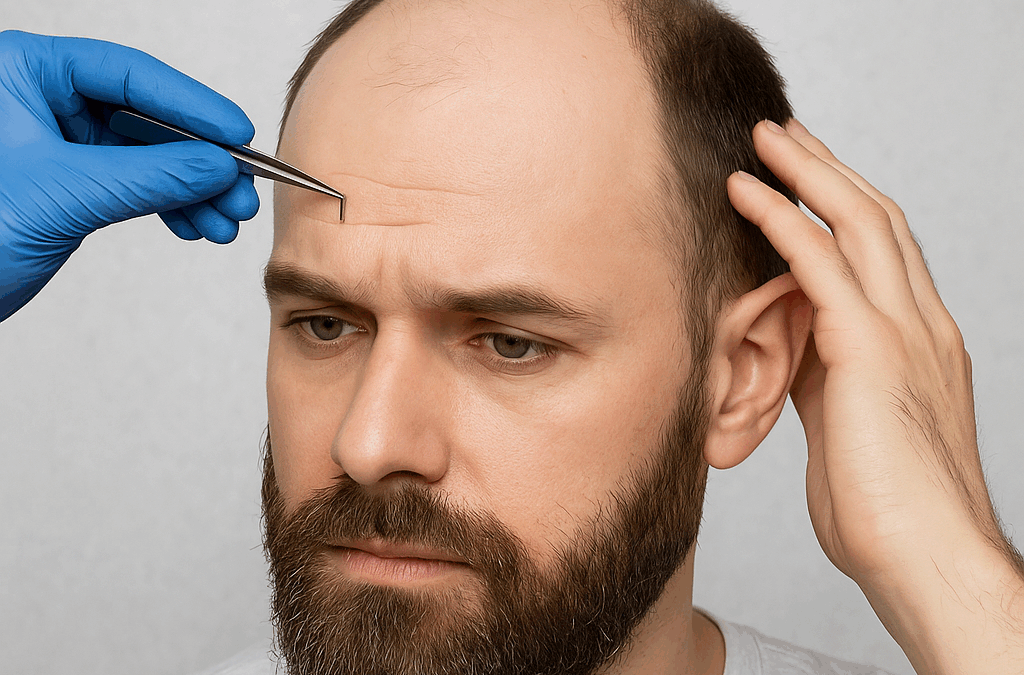
Chin prosthesis surgery
January 9, 2021
Eye Vision Correction Surgeries | Learn About LASIK, PRK, and SMILE in iran
October 21, 2025Introduction
Having thick and healthy hair plays a major role in boosting self-confidence—especially for men. However, some people suffer from a weak or limited donor area on the back of their scalp, leading them to believe that a hair transplant may not be possible for them.
The good news is that with today’s advanced hair transplant techniques, even those with minimal scalp donor hair can achieve natural results — thanks to beard hair transplantation.
What Is a Donor Area and Why Is It Important?
The donor area refers to the part of the body that contains hair follicles resistant to hair loss — typically, the back and sides of the scalp.
These hairs are not affected by dihydrotestosterone (DHT), the hormone responsible for male-pattern baldness, which makes them ideal for transplantation.
But when this area lacks density or strength, surgeons can use beard hair (from the chin, neck, or jawline) as an alternative donor source.
Using Beard Hair in Hair Transplantation
In recent years, using beard hair for scalp transplantation — known as Body Hair Transplant (BHT) — has become an effective and popular solution.
Beard hair is naturally thicker, stronger, and more resistant to loss, which makes it an excellent choice for increasing density in transplanted areas.
Benefits of Using Beard Hair:
- Enhances overall density of transplanted areas.
- Improves the appearance of the hairline when combined with scalp hair.
- More durable follicles, reducing post-transplant shedding.
- Ideal for repair cases, especially after a failed previous transplant.
The Process of Hair Transplant Using Beard Hair
This method is typically performed using FUE or Micro FUE techniques, which do not require stitches or leave visible scars, allowing for faster healing.
Main Steps:
- Consultation and assessment: The surgeon evaluates both the scalp and beard donor areas.
- Extraction of beard follicles: Specialized micro-punch tools are used to harvest grafts carefully.
- Preparation of grafts: Follicles are stored in a special solution to maintain viability.
- Implantation: The extracted beard follicles are transplanted into thinning or bald areas of the scalp.
Does It Look Natural?
Yes — when performed by an experienced surgeon, the results look completely natural.
Typically, scalp hair is used for the frontal hairline, while beard hair is implanted toward the crown or mid-scalp to achieve a natural balance between thickness and texture.
Aftercare Tips
- Avoid washing or touching the transplanted area for 48 hours.
- Keep the donor beard area clean and use prescribed healing ointments.
- Do not shave the beard for at least two weeks after extraction.
- Apply cold compresses if minor swelling occurs.
Possible Side Effects
Like any cosmetic procedure, minor temporary side effects can occur:
- Redness or mild swelling at the donor or recipient site.
- Slight burning or numbness.
- Minor texture difference between scalp and beard hair (which improves over time).
Cost of Hair Transplant Using Beard Hair
The cost varies depending on:
- The degree of baldness and number of grafts required.
- The experience of the surgeon and clinic reputation.
- Whether beard and scalp hair are combined.
On average, the cost ranges between $300 and $600 depending on the country and clinic.
Who Is a Good Candidate for This Technique?
- Individuals with a weak or limited scalp donor area.
- Those who had a previous unsuccessful hair transplant.
- People seeking greater density in the transplanted areas.
- Men with a healthy, thick beard suitable for extraction.
Conclusion
If your scalp donor area is not sufficient for a traditional hair transplant, there’s no need to worry.
With advanced methods like beard-to-scalp hair transplantation (BHT), you can achieve natural and lasting results.
Consulting a qualified and experienced hair transplant specialist ensures the most satisfying and natural-looking outcome.


